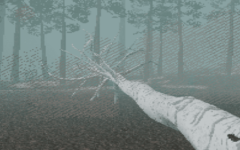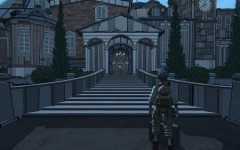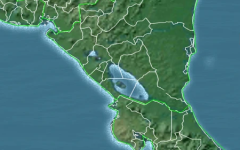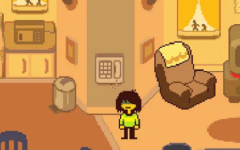Advertisement
Bloodbark
Advertisement

In Bloodbark, you arrive as a worker with one purpose: harvest the rare bleeding wood that makes these trees valuable. You’re told the red sap is natural, the bleeding harmless, and the danger exaggerated. At first, it’s just quiet work—swinging an axe, marking trees, moving deeper into a silent forest. But the silence doesn’t stay still. Trees begin to appear in impossible places, blood pools around your boots, and something shifts in the air each time you strike the bark. What was supposed to be routine labor slowly reveals its true cost.
Unspoken Warnings and Shifting Paths
The gameplay focuses on first-person exploration, with the axe as both a tool and a symbol. It opens routes, but also consequences. You search for more Bloodbark trees, but paths that once led forward now return to where you began, as if the forest itself is guiding—or trapping—you. Subtle visual changes, distorted audio cues, and unexplained events start to interrupt your tasks. Through quiet dialogue and cryptic messages, the game suggests that you’re being watched—not by a person, but by the land itself. Every chopped tree adds weight, and the forest remembers where you’ve been.
Art That Shapes the Atmosphere
Bloodbark takes heavy inspiration from the surreal horror art of Eduardo Valdés-Hevia, using lo-fi textures and dense fog to give players the feeling that they’re walking through a distorted memory. It’s not a loud game—it relies on absence, on the fear of what might happen rather than what does. Multiple endings reflect your choices, but neither offers comfort. With hidden details, secret achievements, and a map that bends logic, Bloodbark builds a world where the line between nature and punishment disappears, and your axe may not be the only thing making cuts.






















































































































































